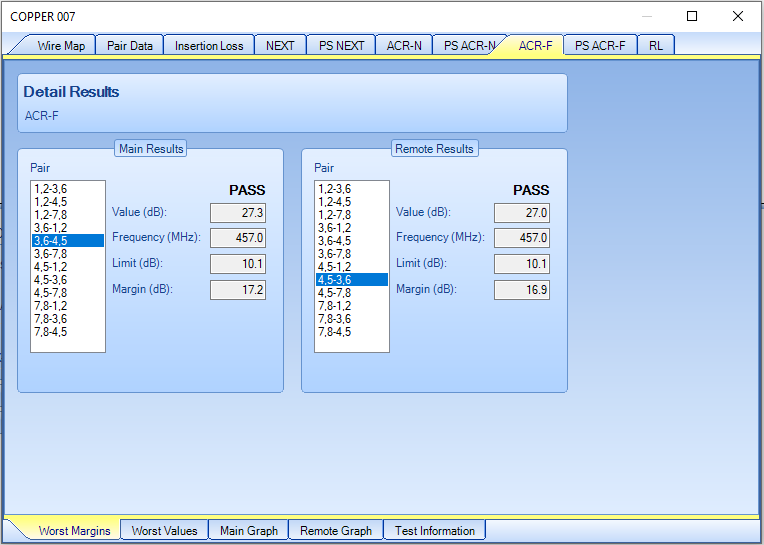ACR-F, formalmente conocido como Diafonía en el extremo lejano de igual nivel (Equal Level Far End Crosstalk, ELFEXT)
In June 2008, Fluke Networks adopted the new nomenclature ACR-F as defined in ANSI/TIA-568-C.2 as well as various European and International Standards. ACR-F is an acronym for Attenuation Crosstalk Ratio Far-end.
ACR-F is a calculated result, rather than a measurement. It is derived by subtracting the Insertion Loss of the disturbing pair from the Far End Crosstalk (FEXT) this pair induces in an adjacent pair. This normalizes the results for length. Consider the FEXT and attenuation measured on two links constructed of the same materials with the same workmanship, but different lengths.
50 m link example:
FEXT = 45 dB
Insertion Loss = 11 dB
ACR-F = 45 - 11 = 34 dB
Another way to understand ACR-F is to think of far-end Attenuation Crosstalk Ratio (ACR) as the same thing.

Interpretación de resultados
Compare the results of measurements made from both ends of the link to the appropriate ISO or TIA limits. There are 12 ACR-F measurements made from each end, for a total of 24. This is because the Insertion Loss can vary slightly depending upon which pair is energized. So as an example, the field tester will energize Pair 1 and listen on Pair 2 at the far end. Then it will energize Pair 2 and listen on Pair 1 at the far end.

ACR-F that is too high is indicative of either excessive Insertion Loss, higher than expected FEXT, or both.
Recomendaciones de resolución de problemas
Experience has shown us that ACR-F issues are normally caused by a cable issue/fault.




